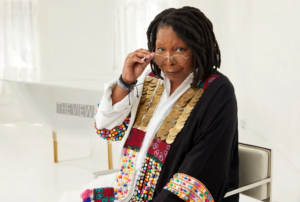In May, a Macon, Georgia, principal brought some good news to the governing board of the charter school she runs.
“ACE has been named No. 1 middle and high school in Middle Georgia,” Laura Perkins told the board.
ACE is short for the Academy for Classical Education. That declaration of “the best” was made by a website based on standardized test scores and a school climate survey with five respondents.
A few years ago, the best school was exactly what Arnab and Garima Bannerjee, who immigrated to the U.S. from India, were looking for.
“Brand new school came up, and all around everyone was talking, having, like, good reviews about the school,” Arnab Bannerjee said.
Garima Bannerjee said it took two years before the name of their son, Arvaan, floated to the top of the admission lottery.
“We were happy because that’s what we wanted, for him to be in one place, make good friends, have a good time,” she said.
But Arvaan didn’t even set foot in a classroom before the Bannerjees began to have misgivings.
“It was the orientation meeting for a new class,” Garima Bannerjee said.
Arnab Bannerjee said for him, there was a clear message from the school administration.
“The school is so secluded, almost like a gated community,” he said. “And you’re lucky to be on this side of the gate and not on the other side.”
Arvaan attended the academy for three years before the Bannerjees were convinced they were better off on the other side of the gate.
PROMISE OF CHOICE
When called to analyze charter schools, Curt Fuller is on the lookout for the promise of choice veering into exclusivity and that exclusivity being coupled with racially inequitable discipline.
“Part of the promise of charter schools is you get autonomy and flexibility in exchange for accountability,” Fuller said.
For schools like ACE, autonomy means a curriculum grounded in the Western Canon the school describes as time-tested for centuries.
But Fuller, who is director of charter school operations with the nonprofit group Building Hope, said charter schools should do more.
“Charter schools should be reflective of the community that they’re in,” he said.
That’s part of the accountability. It’s one of the central tenets Building Hope relies on when it advises charter schools on how to remain fiscally solvent.
The 42 schools overseen by the State Charter School Commission receive some state funding but are divorced from the local property taxes that most conventional schools rely on for funding. Plus, they can’t charge tuition. Those are prices for autonomy.
So they borrow money.
In 2017, Macon’s Urban Development Authority helped ACE secure $36 million in bond lending. When ACE violated the terms of the loan by not having the prescribed amount of cash on hand, that triggered an audit performed by Building Hope and Fuller.
“I’m more concerned about the school operating well than I am about the finances,” Fuller said.
That’s because, according to Fuller, when a charter school operates well, its bondholders will likely make good on their investment.
Fuller started his ACE audit the way he starts all of his audits.
“I would look at their minority enrollment and then I would open up the U.S. Census data for 5 miles around that school and compare it,” he said.
He quickly noticed a big gap between the community and school, he said.
ACE is in Bibb County. And where 80% of Bibb County School District students identify as Black, the Academy for Classical Education is 70% white.
Fuller also found discipline at ACE was racially inequitable. In his audit report Fuller noted “significantly higher consequences” given to non-white students for behavioral issues.
According to data from the Governor’s Office of Student Achievement, ACE is not alone.
Most of the state charter schools with majority white enrollment are nested inside majority Black communities.
White students are far less likely to be disciplined in those schools than students of color, who are sometimes disciplined two or three times more often than their enrollment numbers would suggest.
In 2022 at Pataula Academy in majority Black Calhoun County, 75% of expulsions were among Black students despite only representing 21% of school enrollment. At another Southwest Georgia school, Baconton Community Charter School, Black students are disciplined about twice as often as they are enrolled. White students there are disciplined at a rate slightly less than their enrollment.
Fuller said when those patterns surface, it’s a problem.
“I think it defeats the purpose of education,” he said. “If we want to give students a well-rounded perspective on life and the community that they’re going to be in after they finish their education, they have to be exposed to those different viewpoints and other students.”
Fuller flagged racial inequity in enrollment and discipline as action items for ACE in his final audit.
UNSETTLING EMAILS
Garima Bannerjee said her son Arvaan was in middle school when the family began receiving unsettling emails from the school.
“They sounded like something drastic had happened,” she said. “And it was like ‘Your son’s behavior from so many months has been like this. And now it’s when we’re bringing it to your attention.’ And I’m thinking, ‘If it’s been happening for this long, tell me when it happens. Let’s nip it in the bud.'”
At first the Bannerjees went along with the emails and tried to discipline Arvaan at home until they couldn’t square the emails with the child they knew.
Vashti Obryant has received alarming emails, too.
“This year I’ve received the most emails about Zoé and her so-called issues,” Obryant said. Her daughter, Zoé Caldwell, just finished seventh grade.
The email that pushed her over the edge was about how Zoé would be punished after a field trip where kids passed around a rude photo.
“And the school sent me an email that said she would not be allowed to participate in any eighth grade field trips,” Obryant said.
Obryant said of all the kids on the bus, only her daughter was punished.
Obryant and her daughter are Black. She sees a connection between that and the way her daughter has been disciplined.
“Because Zoé’s been singled out all year, almost,” she said. “Discipline with children with blond hair and blue eyes? It’s swept under the table.”
Garima Bannerjee said what she describes as a barrage of emails about her son’s behavior followed directly in the wake of unsuccessful attempts to talk to the principal about what Arvaan said were anti-Asian comments a teacher made to him.
“It was hard to fight because no one was listening,” she said. “Because every time you go and tell ‘this is what has happened,’ they wouldn’t believe us.”
Eventually, Perkins, the principal, wrote the Bannerjees, “If you feel that this is putting undue pressure on Arvaan, you are free to explore other educational opportunities for him.”
Arvaan has long since moved to a different school. Zoé will attend a new school in the fall.
MEASURES OF SUCCESS
Francis Pearman, an assistant professor in the Graduate School of Education at Stanford University, said struggles like those of Arvaan and Zoé in school are tied to fairness gaps in discipline.
“What we found is that, in fact, those two disparities are two sides of the same coin,” he said.
In their 2019 study, Pearman and his co-researchers looked at standardized test scores across racial groups in school districts across the country as well as patterns of discipline in those districts.
They found that where discipline was more disproportionately applied, test scores for the kids labeled as troublemakers dropped. This was especially true for Black students. But they also found the opposite to be true in schools that are racially balanced in discipline.
“Those schools are also likely the same schools that are meeting academic needs of the students as well,” Pearman said.
But application of discipline is not a component of how the Georgia State Charter School Commission judges success.
In emails, representatives of the commission explained its main measures of success are a charter school’s standardized test scores compared to the average test scores of the neighboring traditional school district.
When considering test scores, ACE does outperform the Bibb County School district.
But at ACE, there weren’t enough Black students who took the high school end-of-course social studies test in 2022 to show up in the data.
And in a county with a 30% poverty rate, no economically disadvantaged students were tested at ACE at the high school level.
Pearman said these are the things to consider when choosing a school.
“The best prediction isn’t how well that school serves the average student,” Pearman said. “The prediction is how well that school has served students who look like your students. That’s the difference, right?”
Perkins, the ACE principal, denied requests to talk about the issues of racial equity in enrollment or discipline at her school. The last request was in person before the board meeting where she touted ACE being named the best school in Middle Georgia. She declined there, too.
“No, I’m not going to talk about it,” Perkins said before closing a door between the school lobby and a hallway.
The Georgia State Charter School Commission, which supplements ACE’s budget by about $14 million annually, also declined requests to specifically discuss issues of racial equity in their schools.
“THEN WHAT?”
Today, Garima Bannerjee says she wouldn’t advise parents experiencing what her family did in waiting three years to leave the Academy for Classical Education. And she says parents considering ACE should ask themselves a question.
“Will my child be happy, especially if I’m not a white person?” she said. “Is my child going to be happy in the school?”
Vashti Obryant takes a different tack.
“If we don’t send our Black children there, if we don’t send our Indian children there, if we don’t send our Hispanic children there, if we don’t send our Korean children, our Vietnamese children — if we don’t send any of those children there, then what?” she asked. “They win. That’s it.”
This story was co-reported with Laura Corley of the Macon Newsroom.




